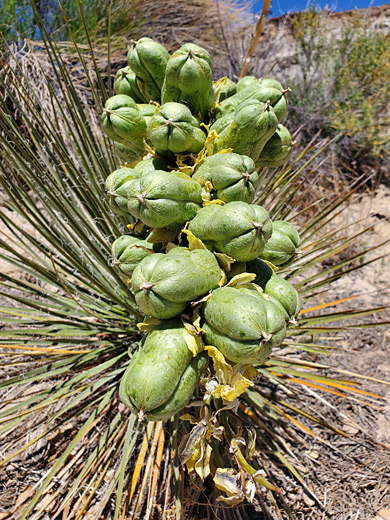Scientific name:
Yucca angustissima
Common name:
Narrow leaf yucca
Range:
North Arizona, south Utah, extreme northwest New Mexico
Form:
Solitary rosette, or cluster-forming
Habitat:
Sandy soils, rocky hillsides, pinyon-juniper woodland; to 7,000 feet elevation
Flowers:
White or cream, sometimes with green or brown tints, along an unbranched, 3 to 6 foot tall stalk (racemose)
Yucca angustissima grows on the Colorado Plateau, principally north Arizona and south Utah, and as its common name suggests is characterized by long (30 inches or more), narrow (half an inch across) leaves, straight-edged, slightly wider in the middle but tapering to a sharp point, topped by a needle-like spine. Long, curling, white filaments grow from the edges, contrasting with the rich green color of the leaves. Plants may develop a short stem, and often form large clusters, but others remain stemless and single. Fruits are broad green capsules, in clusters of three, up to 3 inches long, somewhat constricted in the center.
Four varieties (angustissima, avia, toftiae and kanabensis) are identified by flower properties and leaf length; the two most common are angustissima found across most of the Colorado Plateau and kanabensis further west (centered on Kanab).
Four varieties (angustissima, avia, toftiae and kanabensis) are identified by flower properties and leaf length; the two most common are angustissima found across most of the Colorado Plateau and kanabensis further west (centered on Kanab).
All Contents © Copyright The American Southwest | Comments and Questions | Contribute | Affiliate Marketing Disclosure | Site Map




